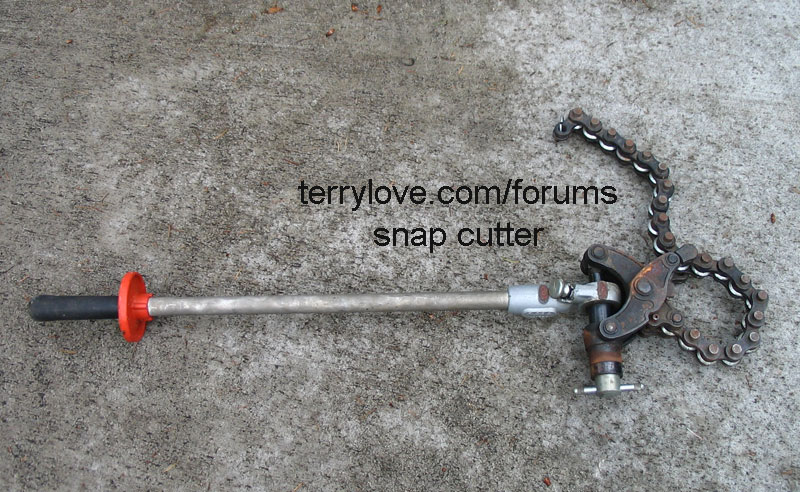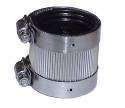You can maybe do it...
It is good advice to be cautious about cutting into your four inch stack. You must buy riser clamps and build a little cage around the pipe to be cut. Use the riser clamps to hold up the cast iron above and below the cut. You don't want that pipe sagging or falling on you.
Secondly, understand that a lot can go wrong, especially with the snap cutters. If the pipe crushes, you will have to saw it out with one of the methods mentioned previously and it is apparently a huge hassle. I believe the possibility of sagging pipes or crushing the pipe rather than snapping it are the two most serious consequences.
Having recently cut into my 4" cast iron stack to run a new drain line for a new bathroom I can tell you that you should be prepared for these negative outcomes. However, with advice I was able to do it with no problems. Be sure you support the pipes above and below the cut and rent a ratcheting chain cutter. There is really very little involved in using the chain cutter. Just mark your cuts, give yourself some extra room and then tighten the chain.
Once you cut out a section of pipe in the stack, Use a pvc wye fitting with some straight pvc pipe glued into the hubs. Then go ahead and use your rubber (no hub) gaskets to connect to the cast iron. Mine work great and I never had any leaks. When you snap the pipe it may not fall right out, even with riser clamps because a bit of weight is still on it. You can make a third cut between the first two, but make it at an angle, Then tap it with a hammer and the piece should fall right out. Be cautious about pieces falling into the cut stack when you use the hammer. I had to retrieve a piece with a telescoping magnet, but it worked.
I went ahead and cut my own stack because I really wanted to do it and felt I could handle it. Many people told me I should hire a pro, but it worked out okay for me. I went ahead partially because there are no guarantees when doing this. You could have a pipe that crushes instead of snaps even if a pro does it. If your pipes sag for some reason or fall, it could happen even to a pro. Then it'll cost you a lot. I figured I'd do my own because what could go wrong for me could also go wrong for a pro. But luckily, things worked out.
You could ask the pros here who do this all the time how often a pipe will crush instead of snap, but I think it's pretty rare. It may happen, but I think most pipes will snap. Just be sure you know what you are doing and that you are prepared for any consequences of what you do.
If you are really ready to accept and deal with the possible outcomes, research it until you feel ready and then go for it. I had some people on other boards who told me I "needed" to hire a pro, etc., for mine, but I just kept researching and when I was comfortable I did it. Took about three hours to cut the pipe and attach the new fitting.
Good luck. Feel free to ask me questions. Since I'm a DIY'er and I just did it I may better understand your questions than a pro who can't remember what it was like to have the kind of questions a newbie has.


